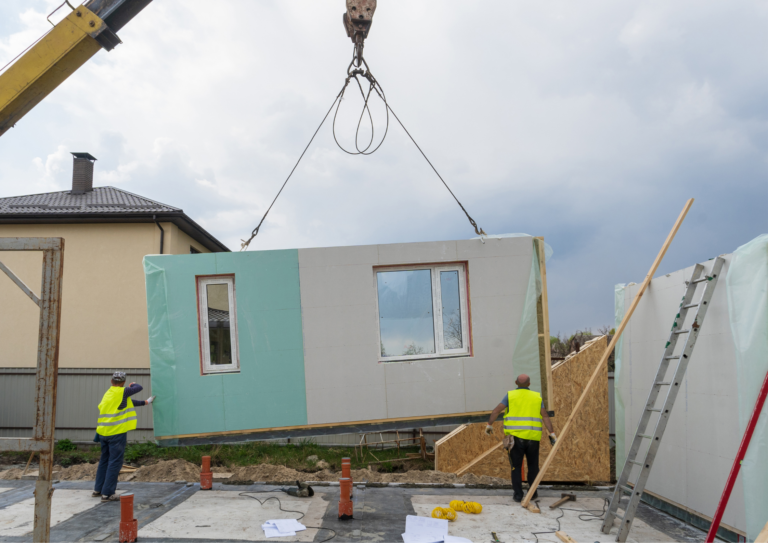To counter the issue of climate change and global warming, civil engineers are considering different ways to lessen the environmental impact posed by the construction sector. One of them is to upgrade the buildings to minimize artificial energy usage such as electricity or natural gas. So, in this blog, we are going to explain why retrofitting for energy efficiency is important and how it could help us to achieve sustainability goals.

Exploring Retrofitting for Energy Efficiency
Retrofitting involves enhancing the energy performance of existing buildings by implementing improvements that reduce energy usage and operating costs. Typically, this process includes:
- upgrading building systems
- enhancing insulation
- sealing air leaks
- incorporating energy technologies along with energy systems.

Advantages of Retrofitting for Energy Efficiency
1. Decreased Energy Usage:
Firstly, enhancements like improved insulation, upgraded heating/cooling systems (HVAC) and installation of energy-efficient lighting/appliances can significantly reduce energy consumption. As a result, there will be fewer utility bills. Therefore, it can be said that retrofitting your home would lessen your expenses and greenhouse gas emissions.
2. Cost Savings:
When you shift from artificial appliances and make the best use of natural resources after the retrofitting process; there would be a lot of cost savings. Imagine having good ventilation in a room as compared to using an electric fan/AC, you can easily decide which one is good for you. Lesser appliances mean lesser bills and lesser maintenance costs.
3. Improved Air Quality:
Renovations can improve the comfort and health of those inside by dealing with problems like temperature changes, humidity levels, and air quality. By fixing air leaks, managing ventilation, and getting rid of drafts renovations establish a healthier indoor setting, for building occupants.
4. Benefits for the Environment:
Retrofitting buildings for energy efficiency helps reduce the emission of greenhouse gases linked to building operations, which in turn aids in combating climate change and protecting the environment. This effort not only cuts down on energy usage and lessens dependence on fuels but also paves the way for a cleaner, more sustainable future for future generations.
5. Increased Property Value:
Lastly, as awareness about the environment is being increased, people are now more likely to buy houses with good energy efficiency. Therefore, if you want to increase the value of your property then retrofitting for energy efficiency is a must for you!

Approaches to Enhancing Energy Efficiency Through Retrofitting
1. Energy Audit and Evaluation:
Firstly, you need to identify areas that require improvement and must be retrofitted on priority. Evaluate building components such as systems, equipment, insulation sealing techniques, lighting fixtures among others to identify inefficiencies and potential cost savings.
2. Overall degradation:
Enhance the building envelope by adding insulation, sealing air leaks, and upgrading windows and doors to reduce heat loss and enhance comfort. Upgrades like improved insulation levels, air sealing measures, and high-performance windows can significantly cut down on heating/cooling demands leading to cost savings while improving comfort levels.
3. Upgrades to HVAC Systems:
Enhance the efficiency and performance of heating, ventilation, and air conditioning (HVAC) systems, through upgrades. Upgrade equipment, with energy-saving models, set up thermostats, and fine-tune system controls to lower energy usage without compromising on comfort.
4. Improving Lighting and Controls:
Swap out energy-draining fixtures with energy-efficient LEDs and add lighting controls like occupancy sensors, daylight sensors, and dimmers to cut down on energy usage and enhance the quality of lighting. Upgrading your lighting can lead to energy savings while also boosting comfort and productivity.
5. Incorporating Energy:
Finally, you can even incorporate energy like solar or wind energy. Using roof sunlight, you can fulfill the energy requirements of the house completely (in case your region has fewer cloudy days).

Final Words
So if you want a safer future and more property value, then don’t let this option go!
Brickborne believes in accuracy and time construction without wastage of resources. We believe in economical and sustainable construction. With the advancing world, software is here to assist us in the construction field. Brickborne provides construction drawings as per codes of the region, 3D modeling, rendering, and animation walkthroughs of both interior and exterior, and quantity surveying and cost estimation. Choose us to change your dreams into reality as we say, Brickborne- We Design Your Ideas!






2 comments
6 Amazing Benefits of Solatubes You Need To Know
[…] short of space and it is becoming difficult to have an open space in every house. Furthermore, to save the energy and reduce electricity costs, we must maximize the use of natural sources of light. To address all these issues, scientists […]
House Renovation: What You Need to Know
[…] option to renovate your home. In this blog, we will discuss what is house renovation, how to plan house renovation and how to adjust your budget […]